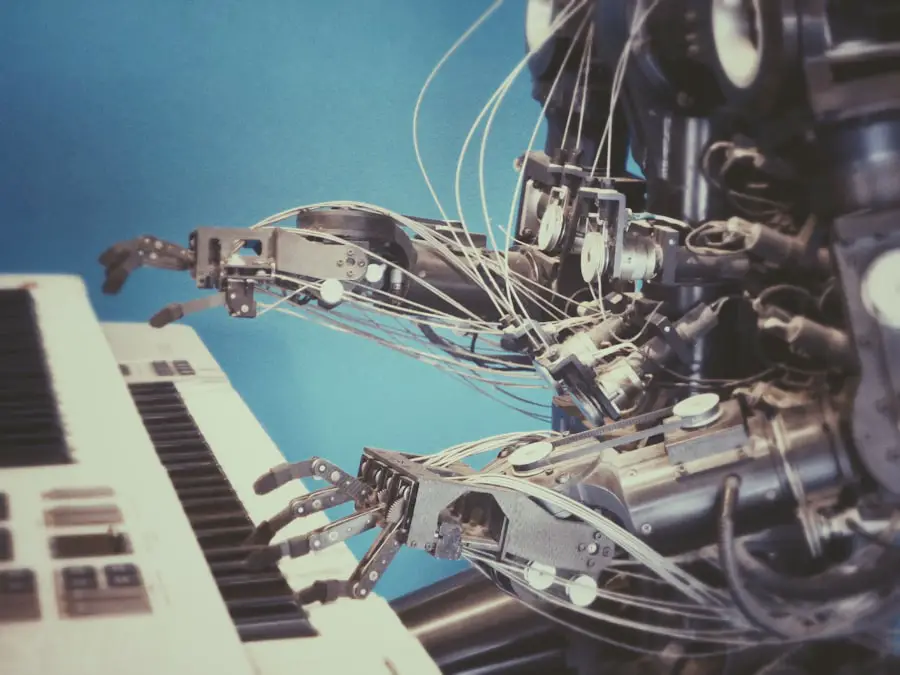Transferring photos from an iPhone to an Android device can seem daunting, especially for users who are accustomed to the Apple ecosystem. The differences in operating systems, file formats, and user interfaces can create a sense of confusion. However, with the right knowledge and tools, this process can be straightforward and efficient.
Whether you are switching devices permanently or simply want to share a few cherished memories, understanding the various methods available for transferring photos is essential. The need to transfer photos may arise for several reasons. Perhaps you have decided to switch to an Android device for its customization options or better hardware specifications.
Alternatively, you might want to share photos with friends or family who use Android devices. Regardless of the motivation, knowing how to effectively transfer your images ensures that your memories remain accessible and intact. This article will explore various methods for transferring photos from an iPhone to an Android device, providing detailed insights into each approach.
Key Takeaways
- Introduction: Transferring photos from iPhone to Android can be done using various methods
- Cloud storage: Use services like Google Photos or Dropbox to easily transfer photos between devices
- Computer and USB cable: Connect your iPhone to a computer and transfer photos directly to your Android device
- Third-party apps: Explore apps like PhotoSync or Send Anywhere for seamless photo transfer
- Email or messaging apps: Send photos as attachments or through messaging apps like WhatsApp or Messenger
- Bluetooth: Transfer photos wirelessly between devices using Bluetooth technology
- Combination of methods: Use a combination of the above methods for a flexible and efficient photo transfer process
- Conclusion: Consider the pros and cons of each method and choose the one that best suits your needs for transferring photos from iPhone to Android
Using cloud storage services to transfer photos
One of the most efficient ways to transfer photos from an iPhone to an Android device is through cloud storage services. Platforms like Google Drive, Dropbox, and OneDrive offer seamless solutions for backing up and sharing files across different operating systems. To begin, users can upload their photos from the iPhone to their chosen cloud service.
This process typically involves downloading the app associated with the cloud service on the iPhone, signing in or creating an account, and then selecting the photos to upload. For instance, if you choose Google Drive, you would first install the Google Drive app on your iPhone. After logging in with your Google account, you can tap the “+” icon to upload photos directly from your camera roll.
Once the upload is complete, you can access these photos on your Android device by downloading the Google Drive app or accessing it through a web browser. This method not only allows for easy transfer but also provides a backup of your images in the cloud, ensuring they are safe even if something happens to your devices. Another advantage of using cloud storage is that it facilitates sharing large quantities of photos without the need for physical connections or cables.
For example, if you have a collection of vacation photos that you want to share with a friend who uses an Android phone, you can simply upload them to a shared folder in Dropbox. Your friend can then access this folder from their Android device and download the images directly. This method is particularly useful for collaborative projects or when sharing high-resolution images that may exceed email attachment limits.
Transferring photos using a computer and USB cable

For those who prefer a more traditional approach, transferring photos via a computer using a USB cable is a reliable method. This process involves connecting your iPhone to a computer and using file management software to transfer the images directly. To start, you will need a USB cable compatible with your iPhone and a computer running either Windows or macOS.
Once connected, you can use software such as iTunes (for Windows) or Finder (for macOS) to access your iPhone’s files. On Windows, after connecting your iPhone, you may need to unlock it and allow the computer to access your device. You can then navigate to “This PC,” find your iPhone under devices, and open it to view its contents.
From there, you can locate the DCIM folder where all your photos are stored. Simply copy and paste the desired images onto your computer. After transferring the photos to your computer, the next step is to move them onto your Android device.
This can be done by connecting your Android phone via USB as well. Once connected, you can drag and drop the images from your computer into the appropriate folder on your Android device, such as the “Pictures” or “DCIM” folder. This method is particularly advantageous for users who prefer having local copies of their images on their computer before transferring them to another device.
Using third-party apps to transfer photos
| Third-Party App | Pros | Cons |
|---|---|---|
| Google Photos | Easy to use, offers free storage | May compress image quality |
| Dropbox | Syncs across devices, good for collaboration | Limited free storage |
| WeTransfer | Simple interface, no account needed | File size limitations |
In addition to cloud services and direct transfers via USB, there are numerous third-party applications designed specifically for transferring data between iOS and Android devices. Apps like SHAREit, Send Anywhere, and Move to iOS provide user-friendly interfaces that simplify the transfer process. These applications often utilize Wi-Fi Direct technology or peer-to-peer connections to facilitate fast transfers without requiring an internet connection.
For example, SHAREit allows users to send files between devices by creating a local Wi-Fi network. To use SHAREit for transferring photos from an iPhone to an Android device, both devices must have the app installed. After launching SHAREit on both devices, you can select the photos you wish to transfer on your iPhone and send them directly to the Android device by selecting it from the list of available devices.
The transfer speed is typically much faster than traditional methods since it bypasses internet bandwidth limitations. Another popular option is Send Anywhere, which offers a unique approach by generating a six-digit key for file transfers. After installing Send Anywhere on both devices, you can select the photos on your iPhone and generate a key that can be entered on the Android device.
This method not only ensures secure transfers but also allows users to send files across different platforms without needing both devices to be on the same network.
Transferring photos via email or messaging apps
For users looking for a quick and straightforward way to transfer a small number of photos, email or messaging apps can be effective solutions. Most email services allow users to attach images directly from their devices, making it easy to send pictures from an iPhone to an Android phone. This method is particularly useful for sharing individual images or small batches without needing additional software or hardware.
To transfer photos via email, simply open your email app on the iPhone and compose a new message. You can attach images by tapping on the attachment icon and selecting the desired photos from your camera roll. Once you’ve added all necessary attachments, send the email to the recipient’s address associated with their Android device.
The recipient can then open their email on their Android phone and download the attached images directly. Messaging apps like WhatsApp or Telegram also provide convenient alternatives for transferring photos between devices. By sending images through these platforms, users can bypass traditional email attachment limits while enjoying instant delivery.
Simply open a chat with the recipient on your preferred messaging app, select the photo option, and choose images from your gallery. The recipient will receive notifications of incoming messages and can download the images directly onto their Android device.
Using Bluetooth to transfer photos

Enabling Bluetooth on Both Devices
To initiate a Bluetooth transfer, both devices must have Bluetooth enabled in their settings. On the iPhone, navigate to Settings > Bluetooth and toggle it on. Similarly, ensure Bluetooth is activated on the Android device as well. Once both devices are discoverable, you can pair them by selecting the Android device from the list of available devices on your iPhone.
Transferring Photos via Bluetooth
After pairing is complete, you can select the photos you wish to transfer from your iPhone’s photo library. Tap on the share icon and choose Bluetooth as the sharing method. Select the paired Android device as the destination for the transfer.
Receiving Files on the Android Device
The recipient will receive a prompt asking them to accept the incoming files. While this method is convenient for small transfers, it is important to note that Bluetooth may take longer than other methods due to its slower data transfer rates.
Transferring photos using a combination of methods
In some cases, users may find that employing a combination of methods yields the best results when transferring photos from an iPhone to an Android device. For instance, if you have a large collection of images but only need to share a few quickly with friends or family members, you might opt for email or messaging apps for immediate sharing while simultaneously uploading all images to cloud storage for later access. Using cloud storage as a backup while utilizing direct transfers via USB or third-party apps can also be beneficial.
For example, after transferring essential images directly using SHAREit or another app, you could upload remaining files to Google Drive for safekeeping and future access across multiple devices. This hybrid approach ensures that important memories are preserved while allowing for flexibility in how they are shared. Moreover, combining methods can help mitigate potential issues that may arise during transfers.
If one method fails due to connectivity issues or software glitches, having alternative options readily available ensures that users do not lose valuable time or data in their efforts to transfer photos.
Conclusion and final tips for transferring photos from iPhone to Android
Transferring photos from an iPhone to an Android device does not have to be a complicated process; understanding various methods allows users to choose what works best for their needs. Whether utilizing cloud storage services for easy access across platforms or employing direct transfers via USB cables or third-party apps, each method has its advantages depending on individual circumstances. When embarking on this photo transfer journey, it is essential to consider factors such as file size limitations, internet connectivity requirements, and personal preferences regarding ease of use.
Additionally, always ensure that both devices are adequately charged before initiating transfers and consider backing up important files before proceeding with any method. By exploring these various techniques and understanding their unique benefits, users can confidently navigate the transition from iPhone to Android while preserving their cherished memories in digital form.
If you are looking for a comprehensive guide on how to transfer photos from iPhone to Android, you may want to check out the article on appssoftwares.com. This article provides step-by-step instructions on how to easily transfer your photos between different devices. It also offers tips and tricks to ensure a smooth transfer process.
FAQs
What are the different methods to transfer photos from iPhone to Android?
There are several methods to transfer photos from iPhone to Android, including using a computer, using cloud storage services, using third-party apps, and using a direct cable connection.
Can I transfer photos from iPhone to Android using a computer?
Yes, you can transfer photos from iPhone to Android using a computer by connecting both devices to the computer and then transferring the photos through file explorer or using third-party software.
Is it possible to transfer photos from iPhone to Android using cloud storage services?
Yes, you can transfer photos from iPhone to Android using cloud storage services such as Google Drive, Dropbox, or iCloud. Simply upload the photos from your iPhone to the cloud storage and then download them onto your Android device.
Are there any third-party apps that can help transfer photos from iPhone to Android?
Yes, there are third-party apps available on both the App Store and Google Play Store that can help transfer photos from iPhone to Android. These apps typically use a Wi-Fi connection to transfer the photos.
Can I transfer photos from iPhone to Android using a direct cable connection?
Yes, you can transfer photos from iPhone to Android using a direct cable connection by using an adapter that allows you to connect the iPhone to the Android device. Once connected, you can transfer the photos through file explorer or using a specific app.
